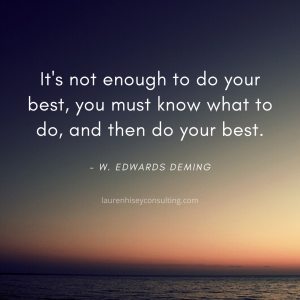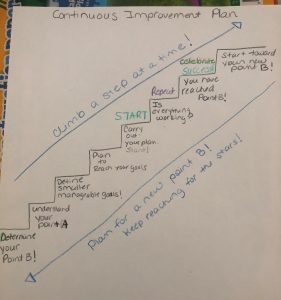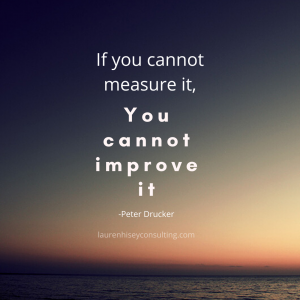
As a business owner or leader, you may know what your starting point (Point A) and goals or endpoint (Point B) are, but you do not know how to get there. Many times, you just go without taking the time to set up any type of plan. Since you do not have a plan, you may be feeling a little lost or unsure. You do not know what your next move should be. The feelings of hopelessness begin to creep in. These feelings become even more significant when things happen that are out of your control. You are maybe feeling this right now because of today’s life-changing events.
The economy and businesses are starting to reopen. Do you know what your next move will be? While you want to do what is best for you and your business, you also realize that there it’s more than this. You are trying to figure out how to serve your customers and employees best. In addition, you want to keep yourself and everyone else safe and healthy. But you also need to figure out a way to increase your sales and revenue.
All of the business worries have a new twist to them today. You are still wondering if your plan from the beginning of the year is still relevant or should you just start over. Instead of starting over, now may be a good time to reevaluate your starting point (Point A) and your endpoint and goals (Point B). You may not need to start over but just adjust your plan. Or maybe it might make sense to start over from scratch. Before you make that decision, there are some things that you can do to help you make the right decision and come up with a plan that works for you.
Within my own business, I develop a CI Plan for myself and my business that is best suited for me. I knew what my point A and Point B were, but I needed to adjust my CI plan for my business. I needed to figure out what was best for myself and my business during these life-changing events. I need to come back to CI and Ikigai. By combining both, I was able to define my why, my passion, and my mission. Once I had these down, it was easy for me to adjust my CI Plan. Instead of feeling hopeless, a CI Plan has helped me to be in control. A CI plan will help you get to your Point B so you can see real progress and feel empowered. With my own CI plan, I’m starting to see results by following the plan each day.
It is like when I set out to start training for half marathon with my husband a few years ago. At this time, never of us have thought about running except for the 10K we completed. We didn’t have a training plan or a nutritional plan. Together we picked out a half marathon we wanted to run. But in true Hisey fashion, my husband and I decided to take it one step further. We decided to complete the Walt Disney World Star Wars Run Challenge of completing a 10K and half marathon in one weekend. While many people might think that is crazy, it is something that my husband and I like to do. We want to take on tough challenges and beat them. So, we set out by setting up a training plan and nutritional plan that would allow us to complete both races without injury. We completed both races and got our medals. But we didn’t stop there, and we decided to run two more Disney half marathons that year to in Disneyland Paris and Disneyland in California. By completing these additional races, we were able to get additional challenge medals. We continuously improved our running and became better with each run.
Creating a Continuous Improvement Plan

Step 1 – Determine your true point B
Point B is your goal! Take time to visualize where you want to be. Don’t rush this step but also do not get stuck in this step. Research if you need to, but remember, at this point, you just need a good enough understanding of where you want to be. You can always readjust your goal as you get further into your CI plan. If your goal is significant, you will break down this goal into shorter manageable goals in Step 3.
Your goal is your measure of success, and no one else’s. You can use other’s as a guide, but create a goal that is best suited for you and your business.

Examples:
- Long-term running goal: I want to run a Half-Marathon on October 5, 2020.
- Long-term business goal:
- Increase revenue for my company or organization to $50K by December 31, 2020.
- Increase revenue for my company or organization to $100K by May 31, 2021
- Increase revenue to $2M for my company or organization by December 2021.
Step 2 – Understand your point A
Before moving forward, you need to understand where you truly stand. Your starting point or point A, and will determine what steps you need to get to your point B. Your starting point should just be a good understanding of where you are today. Just think about drawing a line in the sand; this your starting point.
Examples
- Running – Today, June 1, 2020, I have not run a mile.
- Business –
- I just started my business, and I do not have any previous revenue.
- Today, I’m only reaching 50 prospective clients every few months with my current marketing and sales plan. Out of these 50 potential clients, I’m only signing one new client every few months. My current marketing and sales plan/process is loosely defined and not repeatable. This is not allowing me to reach my revenue goals.
- Today, my current organization or business is bringing in $1 M in revenue each year. We are projected to increase our revenue to $2 M next year, but we are unable to meet the demand if we continue down our current path. Our employees are unhappy, and the entire company is always putting out fires. We need to develop a better way to handle the increase in customer demand and ensure our employees are happy.
Step 3 – Define smaller, manageable goals to help you get to Point B.
To reach point B, you need to set up smaller, manageable goals to get to your bigger goal. By doing this, you will start to see progress a lot faster. As you accomplish each smaller goal, take the time to celebrate the small successes. These small successes empower you to keep going and get to your Point B successfully.
Examples
Running
- Short-term goal 1: Run 1 mile by June 1.
- Short-term goal 2: Run 5 K by July 13.
- Short-term goal 3: Run 10K by August 10.
- Short-term goal 4. Run 9 miles by August 31.
- Short-term goal 5. Run 13 miles by September 28.
Business: Increasing revenue (these numbers can be adjusted to your revenue goals for your business or organization)
- Short term goal 1: Increase revenue to $20K by September 31, 2020
- Short term goal 2: Increase revenue to $50K by December 31, 2020
- Short term goal 3: Increase revenue to $75K by February 28, 2021
Business: Increasing the number of clients (by increasing the number of clients, you should be able to increase your revenue numbers.)
- Short term goal 1: Add 3 clients to my business by September 31, 2020
- Short term goal 2: Add 4 clients to my business by December 31, 2020
- Short term goal 3: Add 6 clients to my business by February 28, 2021
- Short term goal 4: Add 8 clients to my business by May 31, 2021
Step 4 – Plan to reach your goals
Set up a plan that you can follow each day and week to meet your goals. You will need to brainstorm what steps you are going to take each day. There is not one set plan for everyone or business. The plan should be unique to your business. Remember that each step is essential and not to skip steps to try to get ahead too fast. You need to put in the work each day, week, and year to get to your goals. Overnight successes do not happen. Success happens by doing the work each day to get to your goals.
For running this, it would be where you would set up the running and nutrition plan to get you to your goal. You could use a Couch to Half Marathon plans to get you there. But do the program that is right for you.
For a business, this is where you set up your business plan. You will set up the processes, marketing and sales plan, content strategy, etc. to get more clients or to reach your revenue goals. The plans to get where you need to go will be unique to your business or organization.
Step 5 – Carry your plan out. Just start!
You need to start toward your goal. Often business leaders and owners plan and plan, but they just don’t get started. Do not waste time; just get started! Even if a step does not work, you are still taking a step forward because you are learning. You just need to take one Step a time: one run at a time, one meal at a time, one step of the business plan at a time.
Step 6 – Check to see if everything is ok at the target dates that you defined in Step 3.
Complete this step on a weekly and monthly basis. You will check to see if you are on your way or if something did not work right. If everything is going well with your plan, then full speed ahead. If things are not going well, readjust your plan and maybe even your goal.
Examples
Running – Are you meeting your running goals?
- Yes, keep on going with your running and nutrition plan
- No, what happened? Did you get injured or you do not have enough energy?
- Plan for a rest
- Readjust your plan
- Make sure you are getting the right amount of nutrition
Business – Are the steps you are taking getting you toward your goal?
- Yes, keep on going with your business plan
- No, figure out what is not working.
- Experiment until you are on the right track.
- Just make sure you are giving things the right amount of time to see results.
- Do not change too fast!
Step 7 – Keeping doing each step until you reach point B
CI is a daily, weekly, yearly action that you do for improvement. CI is a continuous cycle until you reach point B. Little by little, you will reach your business and personal goals.
Step 8 – Success!! You have reached your Point B!
Celebrate your success!! Do not skip celebrating! You took one step, one day at a time to reach your goal. By celebrating, you are empowering yourself to see how far you have come.
Take this time to relax and enjoy your success!
Do not skip this.
Let things settle and then move onto Step 8.
Step 8 – Set up a new CI plan for your next goal
Remember, step 6, where CI is a daily, weekly, yearly action? The beautiful thing about CI is that you can always have a CI plan to keep on getting better. Don’t stay in the comfortable zone! Get out there and achieve all of the success you want to do!
Just like I did with my business and running, I will share with you what you how you can continuously improve your business. You can start doing things today and work toward your point B. Now is the perfect time to figure out your CI Plan so you can begin to see real progress regardless of what is going on around us.
Do you think you can use this CI plan? What are some things that can do today to get from your point A to point B?
If you would like to talk about setting up your CI Plan, let’s set up some time to chat.
Do not waste time; just get started!” – Lauren Hisey
Leave a Reply